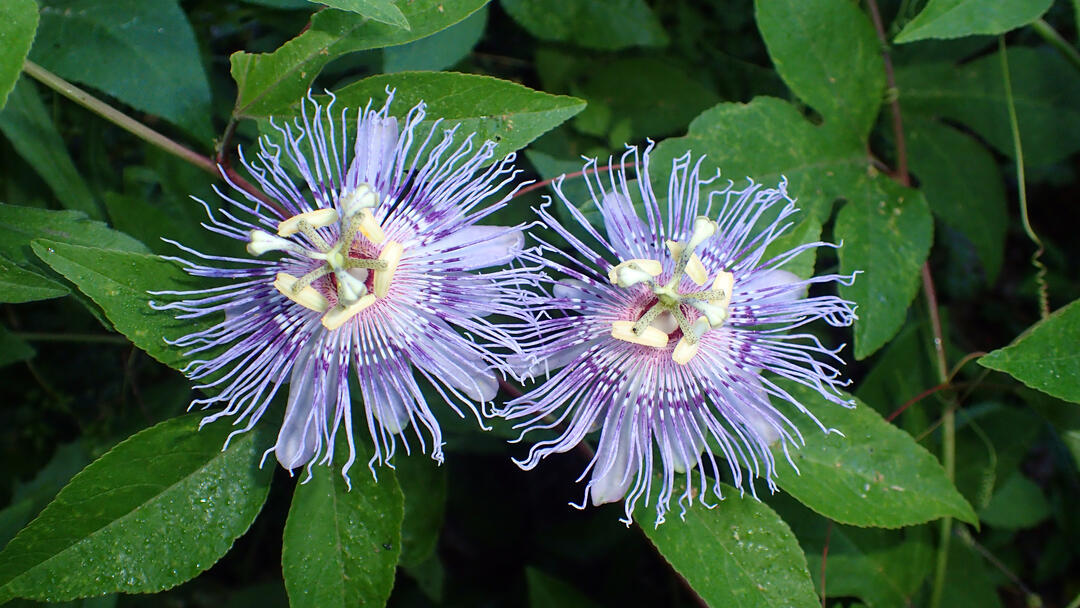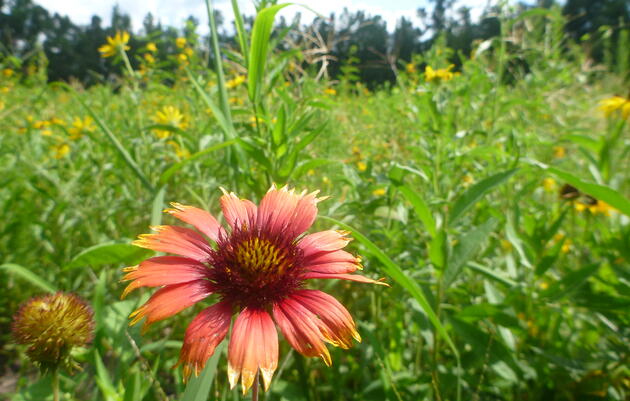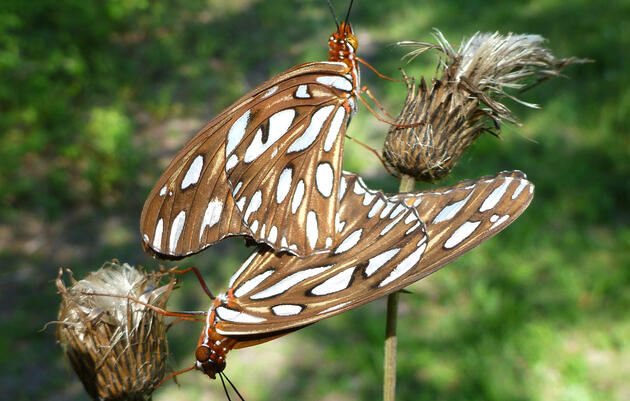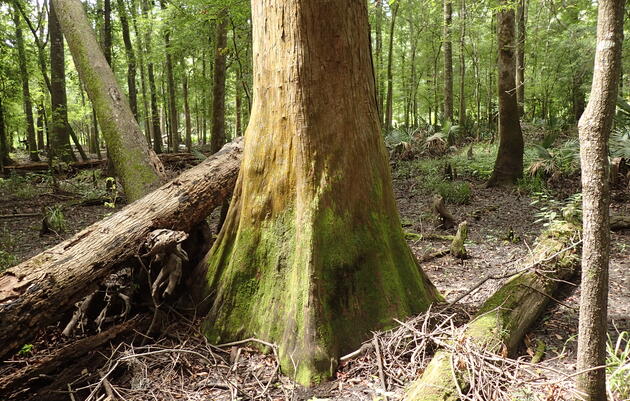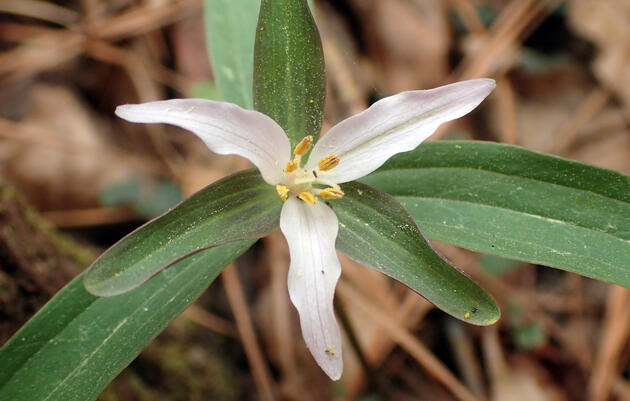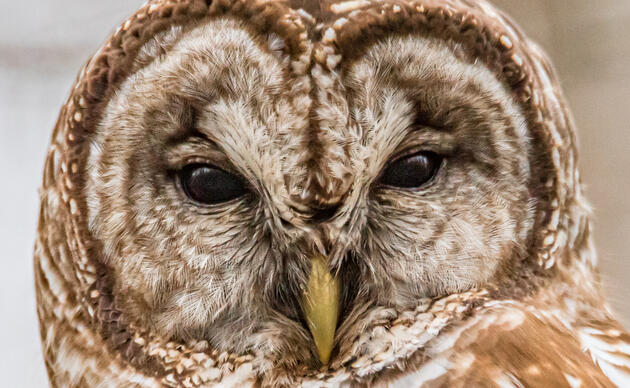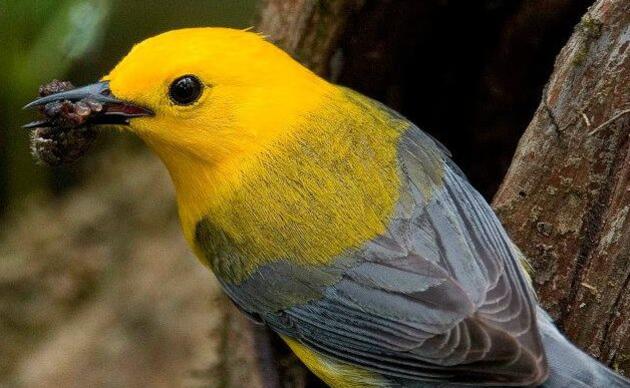Why landscape with native plants? Because plants from faraway places can’t sustain South Carolina birds.
Our birds are adapted to our insects. Our insects are adapted to our plants. A native oak hosts more than 500 species of caterpillars. If you planted an exotic ginko instead, that number would drop to four.
And caterpillars matter. Many birds rely on protein-rich insects to survive. One clutch of chickadees, for example, gobbles down 6,000 to 9,000 caterpillars before they leave the nest.
Native plants have more subtle benefits too. Their deep root systems — really deep compared to turf grass — restore healthy soils. Healthy soils not only absorb stormwater, providing protection from floods; they also absorb or "sequester" carbon, which actually slows climate change.
So hey — how native is your backyard? In urban and suburban areas, more than 80 percent of plants are exotic species. Cities and suburbs now cover 10 to 15 percent of South Carolina, and growing. If homeowners, developers, and landscapers statewide decided to "go native," we could ensure the survival of literally millions of birds.
So let’s get started . . . yesterday! Check out the beautiful plants that are native to your area. Investigate South Carolina’s native nurseries. And please let us know if there's anything we can do to help you make the switch!
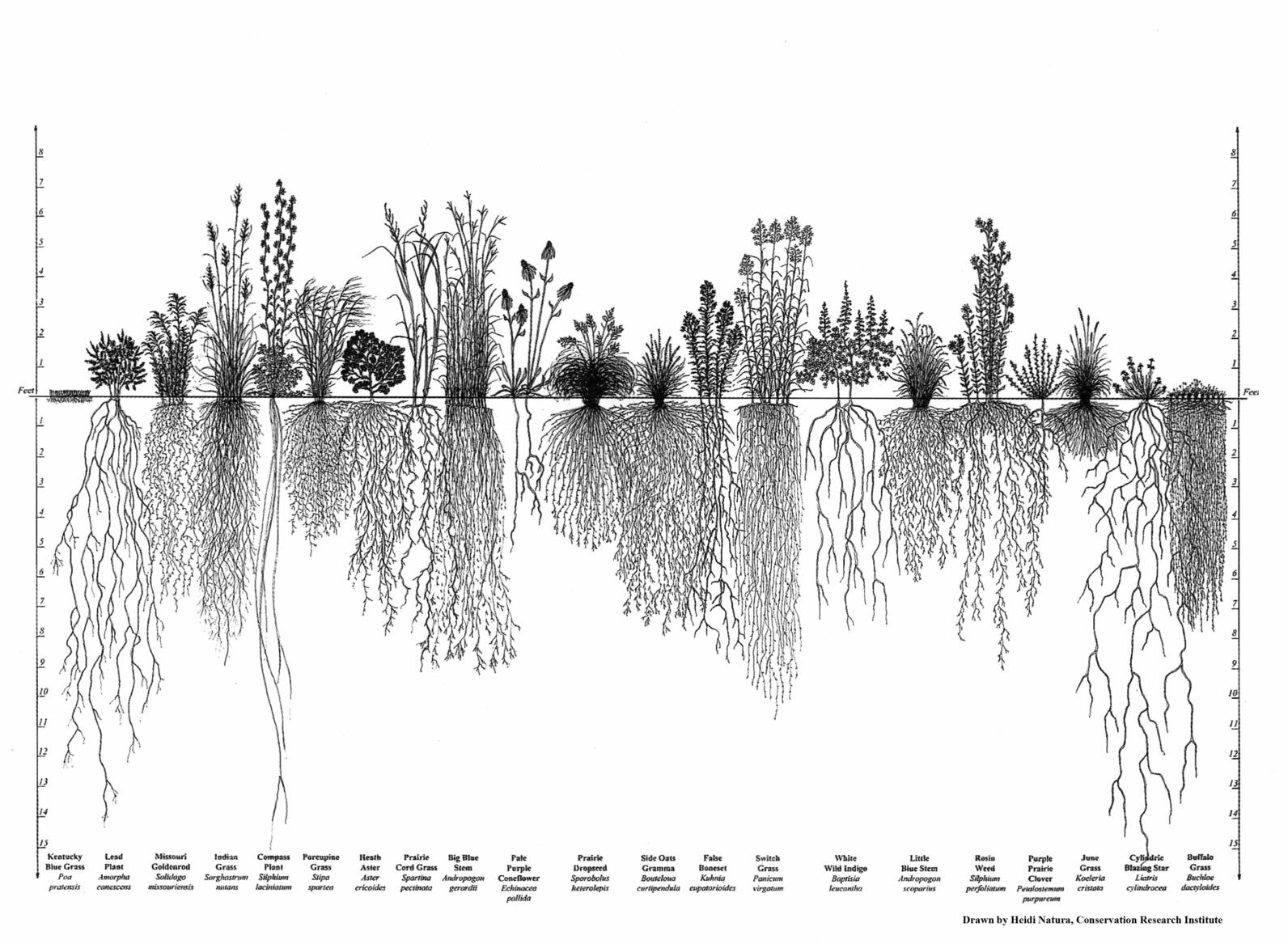
How you can help, right now
Boardwalk Tickets
We're open Wednesdays thru Saturdays 9 AM to 5 PM and
Sundays 11 AM to 4 PM.
Beidler Membership
Click here to purchase a membership, which provides free admission for a year and other benefits. We offer both Individual and Family Memberships.
Donate to Beidler Forest
If you wish to support us, please consider donating. 100% of your donation goes back into Beidler Forest.


